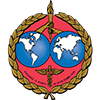Exam Corner
Pathology
SICOT Associate Member & SICOT Newsletter Editorial Board Member - London, United Kindgom
Questions
RANK Ligand is a molecule which is implicated in a variety of degenerative bone diseases and bone metastasis and exerts its effects by binding to:
Osteoclasts
Osteoblasts
Osteocytes
Osteoprogenitor cells
Lining cells
During fracture healing bone blood flow increases as part of the regional acceleratory phenomenon and peaks at:
1 day
3 days
7 days
14 days
30 days
World Health Organization defines osteoporosis as a:
Lumbar density level 3.5 standard deviations below the peak bone mass of a 25-year-old individual
Lumbar density level 2.5 standard deviations below the peak bone mass of a 35-year-old individual
Lumbar density level 2.5 standard deviations below the peak bone mass of a 25-year-old individual
Lumbar density level 2.5 standard deviations below the peak bone mass of a 50-year-old individual
Lumbar density level 3.5 standard deviations below the peak bone mass of a 50-year-old individual
Joint fluid analysis of which of the following conditions shows: 2,000-75,000 white blood cells (WBCs) with up to 50% polymorphonuclear neutrophil leukocytes (PMNs); moderately decreased glucose (25mg/dl lower than serum glucose); low viscosity, yellow-green friable mucin clot?
Non-inflammatory arthritides
Inflammatory arthritides
Infectious arthritides
Hemorrhagic arthritides
Neuropathic arthropathy
The most common cause of upper-extremity neuropathic arthropathy is:
Diabetes
Tabes dorsalis
Syringomyelia
Hansen's disease
Myelomeningocele
The most common joint affected in juvenile rheumatoid arthritis is the:
Shoulder
Elbow
Wrist
Hip
Knee
Osteoid osteomas are characterised by all of the following, except:
Occurs most commonly in 30-50 years age group
Pain that responds to salicylates
May produce scoliosis
Radiographs show intensely reactive bone and a radiolucent nidus
Responds in 90% of cases to radiofrequency ablation
The most common type of osteosarcoma is:
Parosteal
Periosteal
High-grade intramedullary
Telangiectatic
Sarcoma associated with Paget’s disease
Osteosarcoma in children and young adults most commonly occurs about the:
Humerus
Knee
Hip
Pelvis
Spine
Prognostic factors that adversely affect survival in osteosarcomas include all of the following, except:
Expression of P-glycoprotein
High serum alkaline phosphatase
High lactic dehydrogenase
No alteration of DNA ploidy following chemotherapy
The presence of antishock protein 90 antibodies after chemotherapy
Answers
a
Discussion: Osteoblasts and tumour cells express the RANK Ligand, which is a molecule that binds to receptors on osteoclasts, thus increasing bone resorption.
Reference: Review of Orthopaedics, Millerd
Discussion: During fracture healing bone blood flow increases as part of the regional acceleratory phenomenon and peaks at approximately 2 weeks.
Reference: Review of Orthopaedics, Millerc
Discussion: World Health Organization defines osteoporosis as a lumbar density level 2.5 standard deviations below the peak bone mass of a 25-year-old individual.
Reference: Review of Orthopaedics, Millerb
Discussion: Non-inflammatory arthritides: 200 WBCs with 25% PMNs; glucose and protein equal serum values; normal viscosity (high), straw color, firm mucin clot.
Inflammatory arthritides: 2,000-75,000 WBCs with up to 50% PMNs; moderately decreased glucose (25mg/dl lower than serum glucose); low viscosity, yellow-green, friable mucin clot.
Infectious arthritides: >80,000 WBCs with > 75% PMNs; a positive Gram stain and later on positive culture, moderately decreased glucose (25mg/dl lower than serum glucose); opaque fluid, increased synovial lactate.
Neuropathic arthropathy (Charcot joint disease) is a non-inflammatory arthritides caused by disturbed sensory innervation.
Reference: Review of Orthopaedics, Millerc
Discussion: Diabetes → Foot
Tabes dorsalis → Lower extremity
Syringomyelia → Most common upper-extremity cause
Hansen’s disease → 2nd most common upper-extremity cause
Myelomeningocele → Ankle and foot
Reference: Review of Orthopaedics, Millere
Discussion: The most common joint affected in juvenile rheumatoid arthritis is the knee joint.
Reference: Review of Orthopaedics, Millera
Discussion: It is most commonly seen in young patients aged 5-30 years.
Reference: Review of Orthopaedics, Millerc
Discussion: High-Grade intramedullary osteosarcoma is also called ordinary or classic osteosarcoma. It is the most common type of osteosarcoma and most commonly occurs about the knee in children and young adults. Other common sites include the proximal humerus, proximal femur and pelvis. Patients present primarily with pain.
Reference: Review of Orthopaedics, Millerb
Discussion: High-Grade intramedullary osteosarcoma is also called ordinary or classic osteosarcoma. It is the most common type of osteosarcoma and most commonly occurs about the knee in children and young adults. Other common sites include the proximal humerus, proximal femur and pelvis. Patients present primarily with pain.
Reference: Review of Orthopaedics, Millere
Discussion: The absence of antishock protein 90 antibodies after chemotherapy adversely affects survival in osteosarcomas.
Reference: Review of Orthopaedics, Miller


















